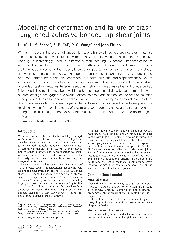摘要
With an increase in the use of advanced high strength steels in vehicle architectures, materials joining issues have become increasingly important. Among the various joining methods, adhesive bonding is increasingly used in automobile manufacturing. Successful implementation of adhesive bonding to improve structural crashworthiness and reduce vehicle weight requires the knowledge of issues related not only to processing but also to joint performance. In this study, a new anisotropic yield criterion which is determined from tensile and shear tests, is developed and incorporated into a finite element model to predict the static load displacement curves of various adhesive bonded steel joints. In the developed model, when the calculated plastic strain of bonded steel joint reaches the equivalent plastic strain of the adhesive the joint is regarded as failed. Modelling results have been validated by the experimental data. Since the model covers different steel grades, gages, and overlap distances, the model can be used to predict the static strengths of adhesive bonded assemblies. Finally, the model is employed to evaluate the effect dissimilar steel grades and sheet gages on the joint strength of lap shear bonded steel joints. The results show that for the joints made of dissimilar steel grade and sheet gage, the stiffness (i.e. strength and thickness) of the two adherends should be balanced to obtain the optimum joint strength.
- 出版日期2008-7
- 单位清华大学
